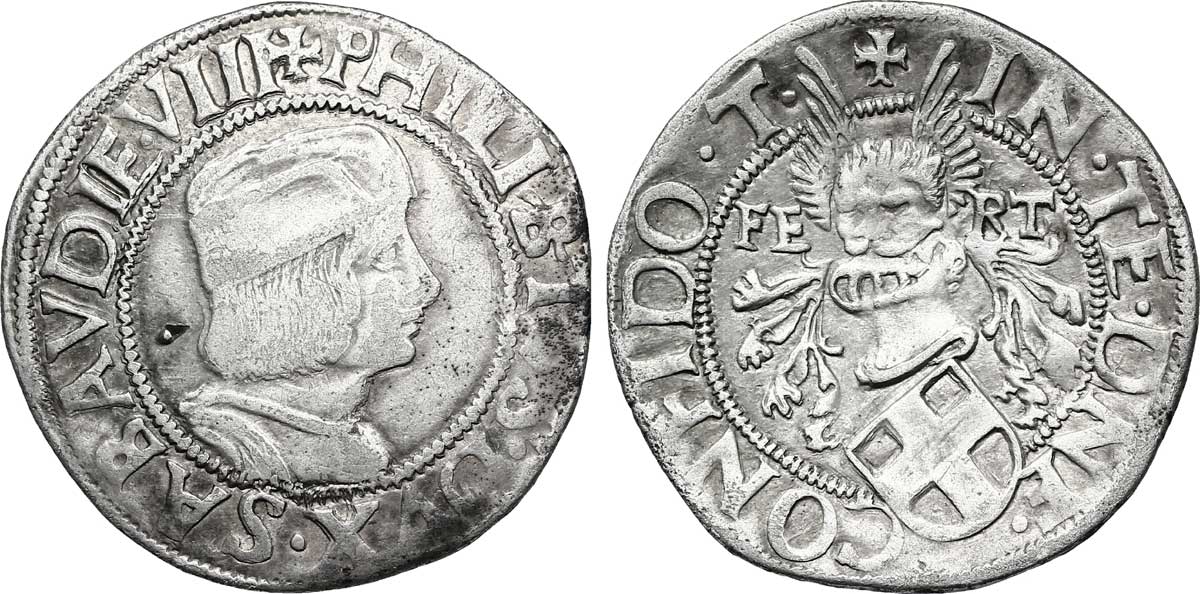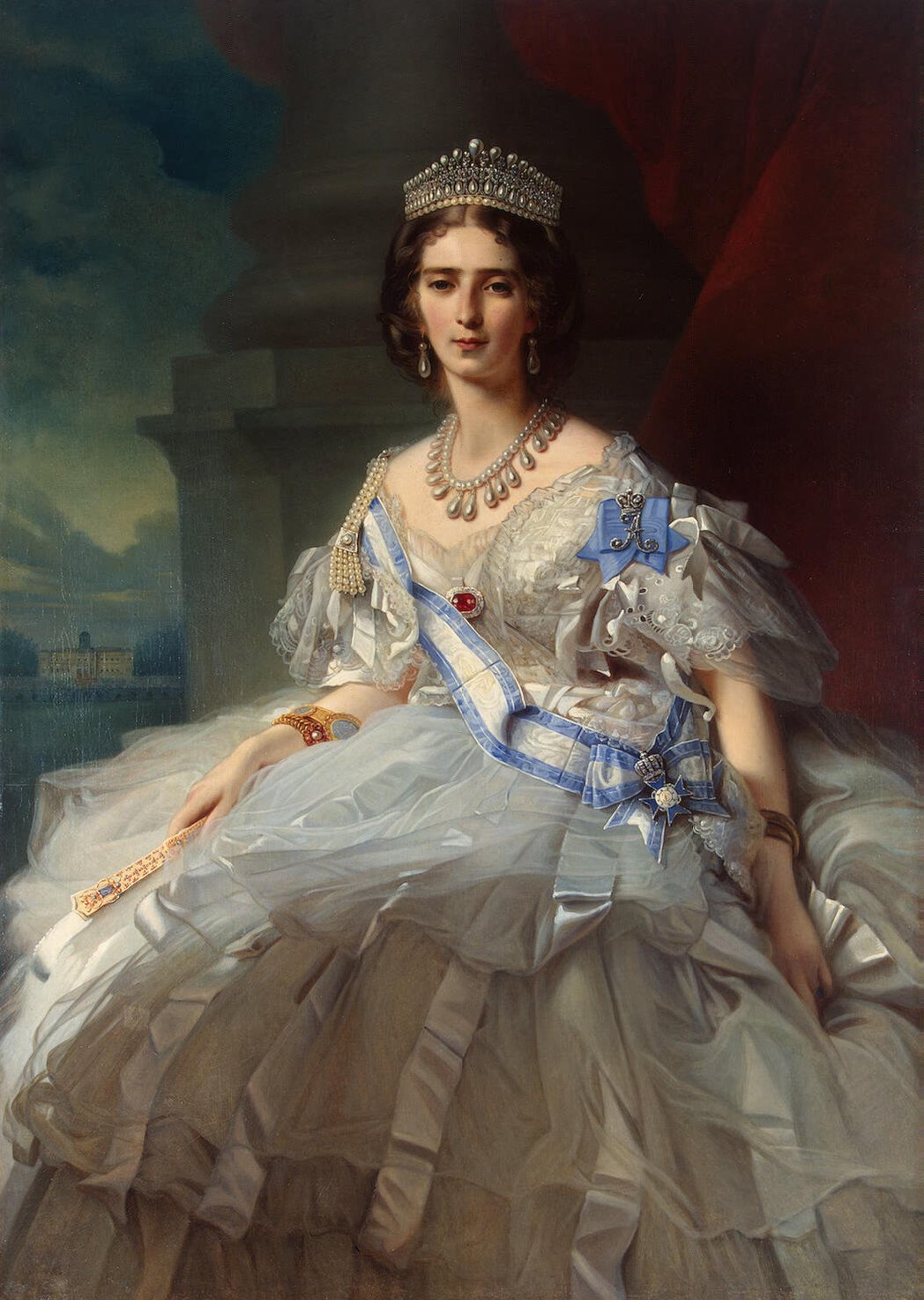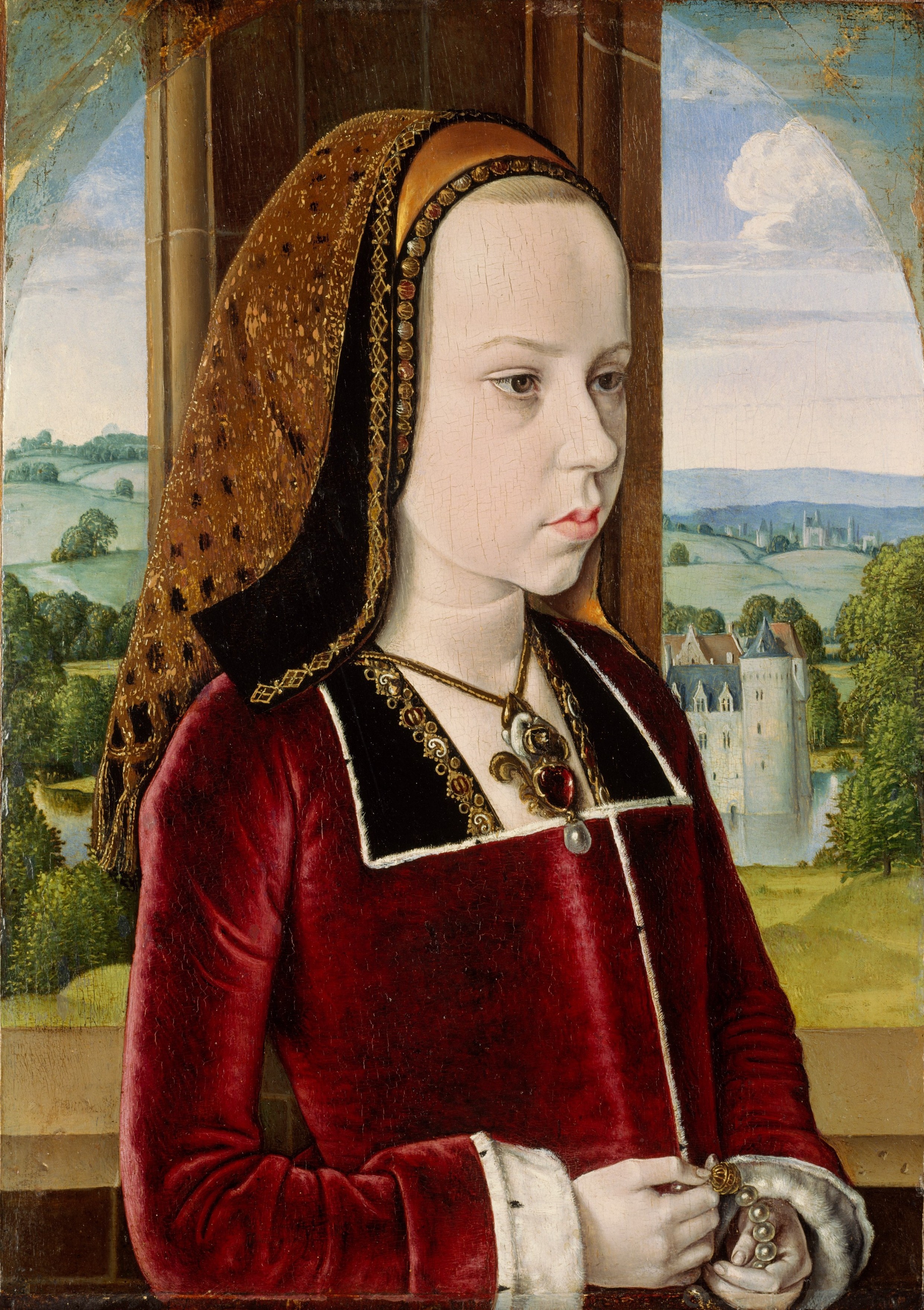|
Louise Of Savoy
Louise of Savoy (11 September 1476 – 22 September 1531) was a French noble and regent, Duchess ''suo jure'' of Auvergne and Bourbon, Duchess of Nemours, and the mother of King Francis I. She was politically active and served as the regent of France in 1515, in 1525–1526 and in 1529. Family and early life Louise of Savoy was born at Pont-d'Ain, the eldest daughter of Philip II, Duke of Savoy and his first wife, Margaret of Bourbon. Her brother, Philibert II, Duke of Savoy, succeeded her father as ruler of the duchy and head of the House of Savoy. He was, in turn, succeeded by their half-brother Charles III, Duke of Savoy. Because her mother died when she was only seven, she was brought up by Anne de Beaujeu, who was regent of France for her brother Charles VIII. At Amboise she met Margaret of Austria, who was betrothed to the young king and with whom Louise would negotiate peace several decades later. Marriage At age eleven, Louise married Charles of Orléans, Count of A ... [...More Info...] [...Related Items...] OR: [Wikipedia] [Google] [Baidu] |
Jean Clouet
Jean (or Janet) Clouet (1480–1541) was a miniaturist and painter who worked in France during the High Renaissance. He was the father of François Clouet. Biography The authentic presence of this artist at the French court is first mentioned in 1516, the second year of the reign of Francis I. By a deed of gift made by the king to the artist's son of his father's estate, which had escheated to the crown, we learn that he was not actually a Frenchman, and never naturalized. He is supposed to have been a native of the Low Countries, and probably his real name was Cloet. He lived several years in Tours, and there it was he met his wife, who was the daughter of a jeweller. He is recorded as living in Tours in 1522, and there is a reference to his wife's residence in the same town in 1523. In that year Clouet was awarded the position of Groom of the Chamber by the King, with a stipend at first of 180 livres and later of 240. He and his wife were certainly living in Paris in 1529, ... [...More Info...] [...Related Items...] OR: [Wikipedia] [Google] [Baidu] |
Philibert II, Duke Of Savoy
Philibert II (10 April 1480 – 10 September 1504), nicknamed the Handsome or the Good, was the Duke of Savoy from 1497 until his death. Biography Born in Pont-d'Ain, Philibert was the son of Philip (Filippo) the Landless and his first wife Marguerite of Bourbon. In 1496, Philibert's father surprisingly succeeded as Duke, when his underaged grandnephew Duke Charles II of Savoy died, being the male heir of the line of Savoy. The same year, the 16-year-old Philibert married the 9-year-old Yolande Louise of Savoy, his cousin and the only sister of the deceased young duke. She was daughter of Duke Charles I of Savoy, the Warrior, and Blanche of Montferrat, as well as granddaughter of Philibert's late uncle, Duke Amadeus IX of Savoy. She was the heir-general of her brother, father, grandfather, and her grandmother Yolande of France, the eldest surviving daughter of king Charles VII of France. Her birthright, after the death of her brother, was the succession of the kingdoms of Cyp ... [...More Info...] [...Related Items...] OR: [Wikipedia] [Google] [Baidu] |
Renaissance
The Renaissance ( , ) , from , with the same meanings. is a period in European history marking the transition from the Middle Ages to modernity and covering the 15th and 16th centuries, characterized by an effort to revive and surpass ideas and achievements of classical antiquity. It occurred after the Crisis of the Late Middle Ages and was associated with great social change. In addition to the standard periodization, proponents of a "long Renaissance" may put its beginning in the 14th century and its end in the 17th century. The traditional view focuses more on the early modern aspects of the Renaissance and argues that it was a break from the past, but many historians today focus more on its medieval aspects and argue that it was an extension of the Middle Ages. However, the beginnings of the period – the early Renaissance of the 15th century and the Italian Proto-Renaissance from around 1250 or 1300 – overlap considerably with the Late Middle Ages, conventionally da ... [...More Info...] [...Related Items...] OR: [Wikipedia] [Google] [Baidu] |
Louis XII Of France
Louis XII (27 June 14621 January 1515), was King of France from 1498 to 1515 and King of Naples from 1501 to 1504. The son of Charles, Duke of Orléans, and Maria of Cleves, he succeeded his 2nd cousin once removed and brother in law at the time, Charles VIII, who died without direct heirs in 1498. Before his accession to the throne of France, he was known as Louis of Orléans and was compelled to be married to his disabled and supposedly sterile cousin Joan by his second cousin, King Louis XI. By doing so, Louis XI hoped to extinguish the Orléans cadet branch of the House of Valois. Louis of Orléans was one of the great feudal lords who opposed the French monarchy in the conflict known as the Mad War. At the royal victory in the Battle of Saint-Aubin-du-Cormier in 1488, Louis was captured, but Charles VIII pardoned him and released him. He subsequently took part in the Italian War of 1494–1498 as one of the French commanders. When Louis XII became king in 1498, he had ... [...More Info...] [...Related Items...] OR: [Wikipedia] [Google] [Baidu] |
Cognac, France
Cognac (; Saintongese: ''Cougnat''; oc, Conhac ) is a commune in the Charente department, southwestern France. Administratively, the commune of Cognac is a subprefecture of the Charente department. Name The name is believed to be formed from individual masculine name -Connius, Gallic name, and the suffix -acum, which would correspond to the "domain of Connius". History The town of Cognac was unknown before the ninth century, when it was fortified. During the Hundred Years' War, the town continually changed sides, according to the tides of war. In 1526, it lent its name to the War of the League of Cognac, the military alliance established by King Francis I of France to fight against the House of Habsburg. As a benefit of the War League of Cognac, King Francis I granted to the town of Cognac the commercial right to participate in the salt trade conducted along the river, from which regional Cognac developed into a centre for the production of wine and brandy. In November 165 ... [...More Info...] [...Related Items...] OR: [Wikipedia] [Google] [Baidu] |
Lady-in-waiting
A lady-in-waiting or court lady is a female personal assistant at a court, attending on a royal woman or a high-ranking noblewoman. Historically, in Europe, a lady-in-waiting was often a noblewoman but of lower rank than the woman to whom she attended. Although she may either have received a retainer or may not have received compensation for the service she rendered, a lady-in-waiting was considered more of a secretary, courtier, or companion to her mistress than a servant. In other parts of the world, the lady-in-waiting, often referred to as ''palace woman'', was in practice a servant or a slave rather than a high-ranking woman, but still had about the same tasks, functioning as companion and secretary to her mistress. In courts where polygamy was practised, a court lady was formally available to the monarch for sexual services, and she could become his wife, consort, courtesan, or concubine. ''Lady-in-waiting'' or ''court lady'' is often a generic term for women whose r ... [...More Info...] [...Related Items...] OR: [Wikipedia] [Google] [Baidu] |
Jeanne Of Angoulême
Jeanne may refer to: Places * Jeanne (crater), on Venus People * Jeanne (given name) * Joan of Arc (Jeanne d'Arc, 1412–1431) * Joanna of Flanders (1295–1374) * Joan, Duchess of Brittany (1319–1384) * Ruth Stuber Jeanne (1910–2004), American marimbist, percussionist, violinist, and arranger * Jeanne de Navarre (other), multiple people * Leon Jeanne (born 1980), Welsh footballer Fictional characters *Jeanne, a character from the ''Bayonetta'' series of video games Arts and entertainment * ''Jeanne'' (1934 film), a French drama film * ''Jeanne'', also known as ''Joan of Arc'', a 2019 French drama film * ''Jeanne'', an 1844 novel by George Sand Other uses * Tropical Storm Jeanne (other) See also * Joan (other) * Joanna * Joanne (other) * Jean (other) * Jehanne (other) * Gene (other) A gene is a sequence of DNA or RNA that codes for a molecule that has a function. Gene or Genes also may refer to: Given nam ... [...More Info...] [...Related Items...] OR: [Wikipedia] [Google] [Baidu] |
Polignac Family
The House of Polignac is the name of an ancient and powerful French noble family that took its name from the '' château de Polignac'', of which they had been ''sieurs'' since Carolingian times. Agnatically, ruling family of Monaco represents the collateral branch of the House of Polignac. History In 1385, the male line became extinct, but the heiress married Guillaume, sire de Chalancon, who assumed the name and the coat of arms of Polignac family. Jules de Polignac (1746–1817) became the first Duke of Polignac in 1780. Notable family members * Melchior de Polignac (1661–1742), French diplomat, Roman Catholic cardinal and neo-Latin poet * Jules de Polignac (1746–1817), became the first Duke of Polignac * Gabrielle de Polastron, duchesse de Polignac (1749–1793), wife of the first Duke of Polignac * Jules, prince de Polignac (1780–1847), promulgator of the July Ordinances * Alphonse de Polignac (1826–1863), French mathematician and number theorist * Camille Arm ... [...More Info...] [...Related Items...] OR: [Wikipedia] [Google] [Baidu] |
Châtelain
Châtelain (from la, castellanus, derived from ''castellum''; pertaining to a castle, fortress. Middle English: '' castellan'' from Anglo-Norman: ''castellain'' and Old French: ''castelain'') was originally the French title for the keeper of a castle.Abraham Rees Ebers, "CASTELLAIN", in: The Cyclopædia, or Universal Dictionary of Arts, Sciences, and Literature' (London: Longman, Hurst, Rees, Orme & Brown, 1819), vol. 6. History With the growth of the feudal system, the title gained in France a special significance which it never acquired in England since the Norman conquest, as implying the jurisdiction of which the castle became the centre. The ''châtelain'' was originally, in Carolingian times, an official of the ''comte'' (count); with the development of feudalism the office became a fief, and so ultimately hereditary. In this as in other respects the ''châtelain'' was the equivalent of the viscount. Sometimes the two titles were combined, but more usually there were no v ... [...More Info...] [...Related Items...] OR: [Wikipedia] [Google] [Baidu] |
Counts And Dukes Of Angoulême
Angoulême (''L'Angoumois'') in western France was part of the Carolingian Empire as the kingdom of Aquitaine. Under Charlemagne's successors, the local Count of Angoulême was independent and was not united with the French crown until 1308. By the terms of the Treaty of Brétigny (1360) the Angoumois, then ruled by the Counts of Angoulême, was ceded as English territory to Edward III. In 1371 it became a fief of the Duke of Berry, before passing to Louis I, Duke of Orleans, both of whom were cadets of the French royal family. From then on it was held by cadets of the Valois House of Orleans, until Francis, Count of Angoulême, became King of France in 1515. Angoumois was definitively incorporated into the French crown lands, as a duchy. Counts of Angoulême House of Guilhelmides (Williami) * Turpio (839–863) * Emenon of Poitiers (863–866), brother of Turpio ** Aymer of Poitiers (Aymer I of Angoulême) (916-926), son of Emenon House of Taillefer * Wulgrin I (866–886), fir ... [...More Info...] [...Related Items...] OR: [Wikipedia] [Google] [Baidu] |
Margaret Of Austria (1480-1530)
Archduchess Margaret of Austria (german: Margarete; french: Marguerite; nl, Margaretha; es, Margarita; 10 January 1480 – 1 December 1530) was Governor of the Habsburg Netherlands from 1507 to 1515 and again from 1519 to 1530. She was the first of many female regents in the Netherlands. Childhood and life in France Margaret was born on 10 January 1480 and named after her stepgrandmother, Margaret of York. She was the second child and only daughter of Maximilian of Austria (future Holy Roman Emperor) and Mary of Burgundy, co-sovereigns of the Low Countries. In 1482, her mother died and her three-year-old brother Philip the Handsome succeeded her as sovereign of the Low Countries, with her father as his regent. The same year her mother died, King Louis XI of France signed the Treaty of Arras, whereby her father promised to give her hand in marriage to Louis' son, Dauphin Charles. The engagement took place in 1483. With Franche-Comté and Artois as her dowry, Margaret was ... [...More Info...] [...Related Items...] OR: [Wikipedia] [Google] [Baidu] |
Château D'Amboise
The Château d'Amboise is a château in Amboise, located in the Indre-et-Loire ''département'' of the Loire Valley in France. Confiscated by the monarchy in the 15th century, it became a favoured royal residence and was extensively rebuilt. King Charles VIII died at the château in 1498 after hitting his head on a door lintel. The château fell into decline from the second half of the 16th century and the majority of the interior buildings were later demolished, but some survived and have been restored, along with the outer defensive circuit of towers and walls. It has been recognised as a ''monument historique'' by the French Ministry of Culture since 1840. History Origins The Château d'Amboise was built on a spur above the river Loire. The strategic qualities of the site were recognised before the medieval construction of the castle, and a Gallic oppidum was built there. In the late 9th century Ingelgarius was made viscount of Orléans and through his mother was rela ... [...More Info...] [...Related Items...] OR: [Wikipedia] [Google] [Baidu] |






